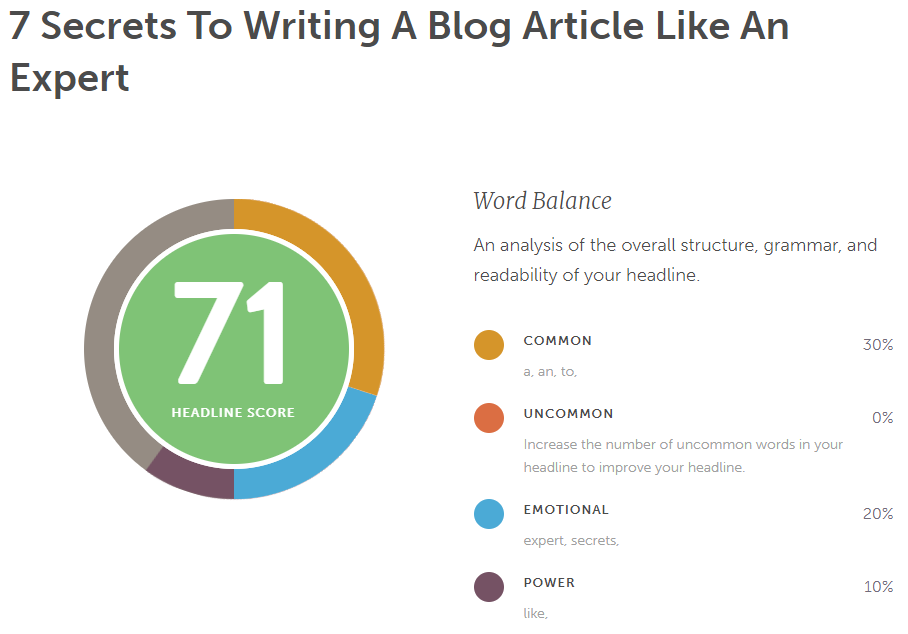
Introduction - how to start a blog post?
How about starting to write an article now? What would you do first?
Study the subject, make a draft or have a coffee?
Writing a blog post isn't as simple as it sounds, but it doesn't have to be complex either!
That's why we've put together a step-by-step guide to help you write faster and perhaps triple your content production speed!
1) Start with the problem - What's keeping the reader awake?
Before you start writing, grab a coffee, sit down and think about this:
- "what pain does my reader have?"
- "what makes my reader sleepy?"
- "what does he want to solve now?"
This will help to direct the production of the article, as it will be focused on the reader and not on what you want to say.
Let's take an example: the reader wants to know how to use commemorative dates to create promotions.
So, your article will have the following content:
- the use of commemorative dates for promotions
- step by step to develop a strategy
This brings us to... topic structure:
2) Organize ideas and save time - Use topics and blocks
One of the best ways to plan an article is with topics. This guarantees unparalleled agility and organization for its production!
Take advantage of what was done in the previous step and start by creating topics as follows:
- Introduction: it is possible to use commemorative dates to develop promotional strategies
- Step 1: choosing the best dates for your business
- Step 2: designing promotions that make an impact
- Step 3: publicizing the promotions on the chosen dates
- Conclusion: encouragement to apply right now - "how about starting right now?"
- Ideas: talk about black friday and provide figures on types of discount
Very simple, isn't it? See a live example of how the structure of this article looks here!

Just by doing this, you will have a complete overview of the article and what will be written in it.
Let's take a brief look at what to put in each part:
Introduction
Make sure the introduction is succinct. Clearly state the problem or challenge that the article solves and, if possible, back this up with data or the opinion of an expert.
Steps or Tips
A good article structure is divided into Topics and Sub-Topics. You can use them as X Steps, X Tips, X Ideas or simply X Whys.
Conclusion
Make the conclusion brief but stimulating. You can summarize what has been said or encourage the reader to take some action, such as testing your product or putting into practice what has been taught.
Ideas
This will be your draft. You can let your mind flow. Remember and record all the possibilities for approaching that topic. These entries can later be selected for the article.
3) Nothing is created, everything is transformed... is that right?
Just by thinking about the structure of the article and writing about it, you're already creating something, even if it's not that innovative.
But that doesn't mean you have to do everything from scratch. How about transforming it a little?
It's good practice to take the best references to produce the best possible content.
So I suggest you Google what you're going to write about, in Portuguese and English, on Wikipedia, on YouTube, on Google Images. Take the best ideas and record them. They can really help to raise the quality of your content!
4) Making reading ULTRA fluid - Readability
It's super important that reading is easy and fluid! This will allow your reader to stay on the blog longer and consume your content.
Some tips for this:
Words of Transition
Use and abuse "then", "but", "why", among others, to facilitate fluidity and connection between paragraphs.
Flesch's readability
There is a famous index called Flesch that indicates how easy a piece of content is to read. According to his criteria, to make it easier to read, you can use words with few syllables and short sentences of less than 20 words.
Paragraph length
Use short, succinct paragraphs. There is no rule for the maximum number of lines, but it is interesting to break up the paragraph every 3 or 4 lines. Another tip is to use and abuse subtopics to separate paragraphs.
An excellent tool for testing your readability, if you use WordPress, is the Yoast plugin. Here's a comprehensive article on readability.
5) Incredible titles - Increase your results by 500%
"The difference between a good headline and a bad headline can be just massive. It's not a rounding error. When we test headlines we see 20% difference, 50% difference, 500% difference. A really excellent headline can make something go viral."
According to Peter Koechley, co-founder of upworthy.com
So it's not for nothing that we've chosen the title as one of the main tips of this article! This is one of the main elements for a successful blog post!
Make a bad headline and sink all the work you've done. Make an amazing headline and get the most out of the content!
Type of title for a post
To create the title, start by defining its type:
- Lists - e.g. "5 steps to..."
- What it is / How - e.g. "How to do..."
- Questions - e.g. "What is the form of...?"
- Generic - e.g. "Forms of..."
Prefer to use Lists or What is / How types. These tend to get the best results, according to a Conductor survey on headline preferences.
Test at least 10 different titles
A good recommendation is to test at least 10 different titles for your blog post. Choose the best one to use and, if you like, you can even run A/B tests after publishing it.
A good tool for carrying out these tests is Coschedule's Headline Analyzer. You can test different options, receive tips and automatically record each test with the tool's evaluation.

6) SEO - Make sure your article is found on Google
SEO is a very broad subject, but we're going to give you just one essential tip for optimizing your article for Google.
Keyword focus - what do you want to be found for?
One of the main SEO and Content Marketing strategies is to use articles to get your business found on Google.
So, when writing a post, think about which word or phrase you want it to appear for.
Using the example given at the beginning, some options would be: "commemorative dates", "how to create promotions", "selling on Mother's Day".
After defining the keyword (or "key phrase"), use it in your title, headlines and content.
Ah! We recommend using the Google Ads Keyword Planner to research the focus keyword for your blog post.
The higher the search volume forecast for the word and the less competition there is, the easier it will be for you to attract traffic through the article!
Create your blog post now - how about now?
That's it! You've got it! How about grabbing a coffee and starting to write an article right now?


















